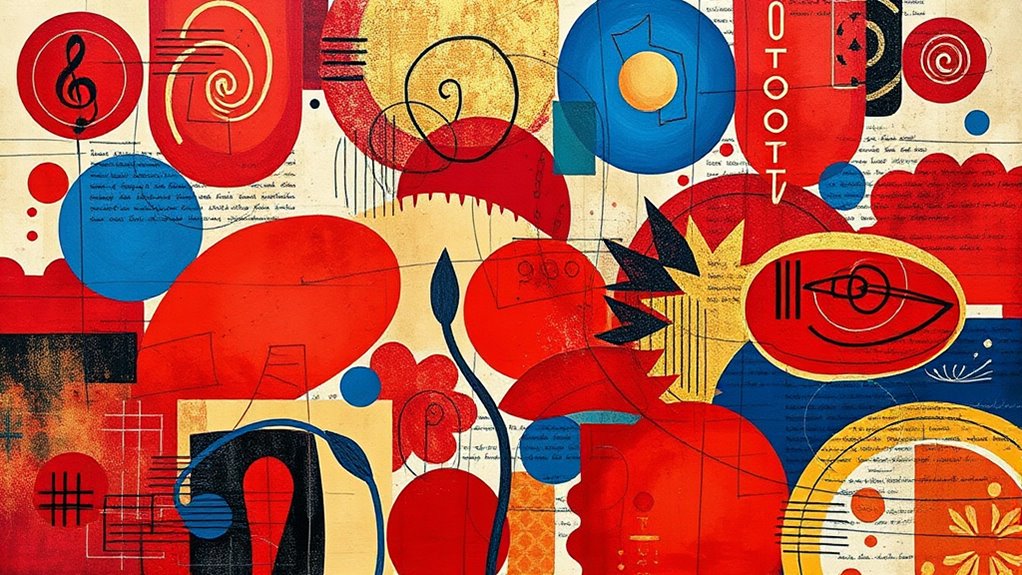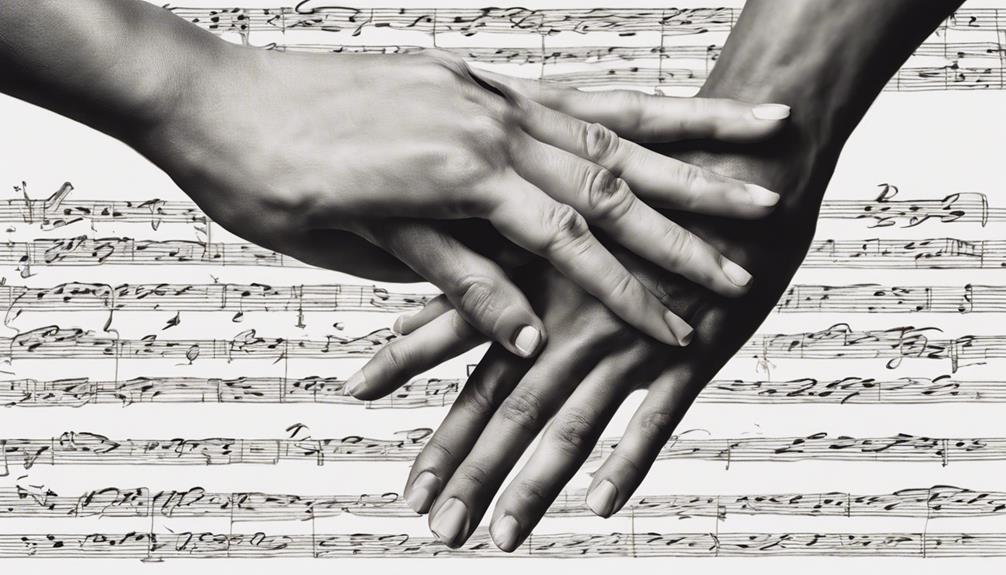Deaf poetics turns sign language into a powerful visual art form that captures rhythm, emotion, and meaning through movement, spatial relationships, and symbolic gestures. You’ll notice how it emphasizes visual storytelling with choreography, gestures, and expressions that create layered narratives. This art form taps into the sensory experience, engaging viewers beyond words. If you keep exploring, you’ll discover how technology and performance amplify its expressive potential even further.
Key Takeaways
- Deaf poetics emphasizes visual and spatial language, using sign language gestures as metaphors to express abstract ideas.
- It creates layered narratives through choreographed movements, rhythm, and visual symbolism beyond spoken words.
- Sign language metaphors evoke emotional and conceptual depth, enriching the poetic experience visually.
- Visual storytelling in Deaf poetics relies on body movement, spatial relationships, and timing to evoke mood and tension.
- Digital and multimedia tools enhance accessibility, allowing innovative presentation and sensory engagement of Deaf poetic art.

Deaf poetics is a vibrant and evolving form of artistic expression that explores the unique experiences and cultural identity of the Deaf community. It’s a powerful way to communicate beyond words, harnessing the visual and spatial nature of sign language to create art that resonates on multiple levels. In this form of poetry, you’re not just reading or listening—you’re engaging with the rhythm, movement, and visual symbolism that make Deaf poetics so compelling.
One of the core elements of Deaf poetics is the use of sign language metaphors. These metaphors go beyond literal meanings, tapping into the rich visual vocabulary of sign language to convey complex ideas and emotions. For example, a sign that depicts a wave might symbolize change, fluidity, or emotional upheaval. These metaphors aren’t simply linguistic devices; they serve as visual symbols that deepen the audience’s understanding. They allow you to experience abstract concepts through concrete, expressive gestures that evoke imagery and feeling. This blending of language and visual art creates a layered narrative, inviting you to interpret and connect with the work on a sensory level.
Complementing these metaphors are visual storytelling techniques that emphasize rhythm, space, and movement. Deaf poets often choreograph their signs with precision, using the entire body to craft a visual rhythm that guides your eye across the performance or artwork. These techniques include manipulating spatial relationships, framing signs within specific areas, and utilizing the tempo of movement to evoke mood and tension. As you watch or read, you become immersed in the visual flow, sensing the pulse and cadence that mirror musical or poetic rhythms. This visual storytelling transforms language into a dance of gestures and expressions, making the act of experiencing Deaf poetics akin to watching a performance where every gesture counts. Additionally, understanding projector technology can enhance the way visual poetry is displayed and experienced in digital or multimedia formats, enriching the sensory engagement.
Frequently Asked Questions
How Do Deaf Poets Develop a Unique Rhythmic Style?
You develop a unique rhythmic style by focusing on gesture timing and visual cadence. You experiment with how quickly or slowly you move your hands, creating a sense of flow that captures attention. By emphasizing visual rhythm, you craft patterns that resonate visually, making your poetry dynamic and engaging. This approach allows you to express emotions and ideas through movement and timing, making your work distinctly powerful and personal.
What Role Does Sign Language Play in Visual Poetry?
Imagine a poem where your signing uses gesture symbolism and spatial composition to create meaning. Sign language plays a crucial role in visual poetry by conveying emotion through movement and space, making abstract ideas tangible. You can express complex concepts by arranging signs to form visual patterns, emphasizing rhythm and rhyme through gestures. This enhances the poem’s impact, immersing viewers in a dynamic, multi-sensory experience that highlights the beauty of sign language’s visual artistry.
Can Deaf Poetics Influence Hearing Poets’ Work?
You might wonder if deaf poetics can influence hearing poets’ work. The answer is yes. By exploring auditory illusions and the power of expressive silence, deaf poets demonstrate how visual rhythm and rhyme create a new poetic language. This can inspire hearing poets to experiment beyond sound, emphasizing visual and emotional impact. Your work can embrace these elements, enriching poetry with deeper layers of meaning and innovative forms.
How Is Visual Rhyme Different From Traditional Rhyme?
Imagine words arranged like a mural, contrasting with traditional rhyme’s predictable echo. Visual rhyme emphasizes multisensory engagement through spatial arrangement, where the placement and shape of words create rhythm and meaning. Unlike traditional rhyme, which depends on sound, visual rhyme plays with sight, using visual patterns to evoke emotion. You see a poem’s rhythm in its layout, blending sight and meaning, transforming reading into a dynamic, multisensory experience.
What Are the Key Challenges in Creating Deaf Visual Poetry?
When creating deaf visual poetry, you face key challenges like balancing innovative expression with cultural identity. You must find ways to communicate rhythm and emotion visually, often without traditional language cues. It’s essential to honor Deaf culture while pushing creative boundaries. Maneuvering these aspects requires sensitivity and skill, ensuring your work resonates deeply. You’ll need to adapt techniques that convey meaning effectively, fostering connection and understanding through powerful visual storytelling.
Conclusion
As you explore deaf poetics, you realize there’s more beneath the surface—hidden rhythms and unspoken rhymes waiting to be uncovered. The art isn’t just in sight, but in what lingers just beyond your grasp, teasing your senses. The true power lies in the silence, the unvoiced stories that pulse beneath the visuals. And as you step back, you can’t help but wonder—what secrets does this silent symphony still hold, just out of reach?











